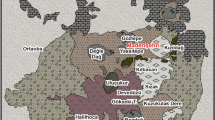Abstract
Buddhism was introduced to Sri Lanka in 4th century BC. Since then various Buddha statues, monuments and temples have been built by various rulers in different parts of the country. The author carried out a research on the rock materials used for the construction of ancient Buddha statues remaining in archaeological sites. The observations indicate that the rock types namely migmatite, biotite gneiss, hornblende biotite gneiss, microcline bearing biotite gneiss and marble have been used for sculpturing. Statues made from highly fractured rocks like quartzite and pegmatite, very strong rocks like charnockite, pink granite and dolerite, and sedimentary limestone are not presently seen in any site. Most of the marble statues are broken in to several pieces due to the effects of both physical and chemical weathering processes. Statutes made from other rocks are still remaining without any major damage. A few statues have been made from the bedrock at the site itself. The other statues or the rock materials or both have been moved from different locations to the present sites. These statues are located on flat terrains, isolated small hillocks, some isolated large exposed rocks and erosional remnants like inselbergs surrounded by flat lands.
Access this chapter
Tax calculation will be finalised at checkout
Purchases are for personal use only
Similar content being viewed by others
References
Cooray PG (1967) An introduction to the geology of Ceylon, Department of National Museums, Government Press, Colombo, p 340
Herath JW (1973) Industrial clays of Sri Lanka. Geological Survey Department publication, Sri Lanka p113
de Jayawardena US (2001) A study on the engineering properties of Sri Lankan rocks. J Ins Eng, SL, pp 07–22
Siriweera I (2001) Rajarata civilization and kingdoms of South-West. Dayawansa Jayakody & Company, Sri Lanka p447
Vitanage PW (1970) A study of the geomorphology and morphotectonics of Ceylon. In: Proceedings of the second seminar on geological prospecting methods and techniques, United Nations, New York, USA, pp 391–405
Walker RC (1962) The hydrometeorology of Ceylon, Part 1. Government Press, Ceylon, Canada Colombo Plan Project
Author information
Authors and Affiliations
Corresponding author
Editor information
Editors and Affiliations
Rights and permissions
Copyright information
© 2015 Springer International Publishing Switzerland
About this paper
Cite this paper
de. Jayawardena, U.S. (2015). A Study on the Present States of Different Rocks of Ancient Monuments in Sri Lanka. In: Lollino, G., Giordan, D., Marunteanu, C., Christaras, B., Yoshinori, I., Margottini, C. (eds) Engineering Geology for Society and Territory - Volume 8. Springer, Cham. https://doi.org/10.1007/978-3-319-09408-3_4
Download citation
DOI: https://doi.org/10.1007/978-3-319-09408-3_4
Published:
Publisher Name: Springer, Cham
Print ISBN: 978-3-319-09407-6
Online ISBN: 978-3-319-09408-3
eBook Packages: Earth and Environmental ScienceEarth and Environmental Science (R0)




